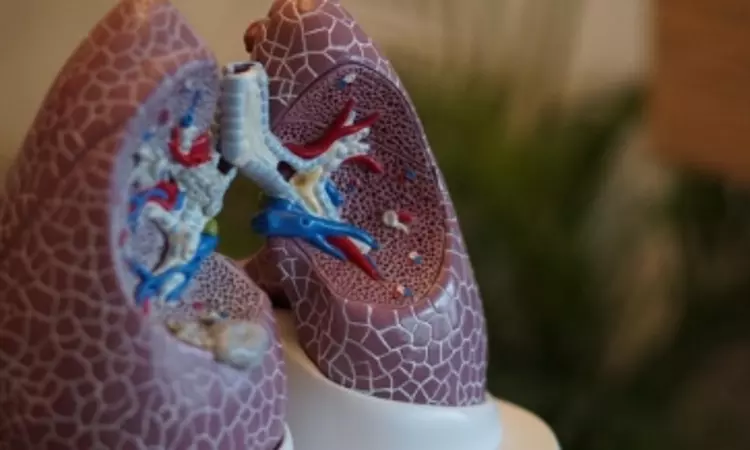Scientists develop robot to maneuver through living lung tissue
Lung cancer is the second most common cancer worldwide, with 2.2 million new cases in 2020.

Representative image
NEW YORK: Scientists have developed a robot that can autonomously traverse human lungs, enabling physicians to reach tumours that are extremely small and hide deep within tissues.
Lung cancer is the second most common cancer worldwide, with 2.2 million new cases in 2020.
The robot with an autonomous steerable needle, developed by a team from the University of North Carolina–Chapel Hill and Vanderbilt University in the US, can go from "Point A" to "Point B" while avoiding important structures, such as tiny airways and blood vessels, in a living laboratory model.
"This technology allows us to reach targets we can't otherwise reach with a standard or even robotic bronchoscope," said Jason Akulian, from the UNC Department of Medicine.
"It gives you that extra few centimeters or a few millimeters even, which would help immensely with pursuing small targets in the lungs," he added.
The robot, detailed in the journal Science Robotics, is made of several separate components. A mechanical control provides controlled thrust of the needle to go forward and backward and the needle design allows for steering along curved paths. The needle is made from a nickel-titanium alloy and has been laser etched to increase its flexibility, allowing it to move effortlessly through tissue.
As it moves forward, the etching on the needle allows it to steer around obstacles with ease. Other attachments, such as catheters, could be used together with the needle to perform procedures such as lung biopsies.
To drive through tissue, the needle needs to know where it is going. The research team used CT scans of the subject's thoracic cavity and artificial intelligence to create three-dimensional models of the lung, including the airways, blood vessels, and the chosen target. Using this 3D model and once the needle has been positioned for launch, their AI-driven software instructs it to automatically travel from "Point A" to "Point B" while avoiding important structures.
"The autonomous steerable needle we've developed is highly compact, but the system is packed with a suite of technologies that allow the needle to navigate autonomously in real-time," said Ron Alterovitz, the principal investigator on the project, from the UNC. "It's akin to a self-driving car, but it navigates through lung tissue, avoiding obstacles like significant blood vessels as it travels to its destination."
The needle can also account for respiratory motion. Unlike other organs, the lungs are constantly expanding and contracting in the chest cavity. This can make targeting especially difficult in a living, breathing subject. According to Akulian, it's like shooting at a moving target.
The researchers tested their robot while the laboratory model performed intermittent breath holding. Every time the subject's breath is held, the robot is programmed to move forward.
"There remain some nuances in terms of the robot's ability to acquire targets and then actually get to them effectively," said Akulian, who is also a member of the UNC Lineberger Comprehensive Cancer Center, "and while there's still a lot of work to be done, I'm very excited about continuing to push the boundaries of what we can do for patients with the world-class experts that are here."
"We plan to continue creating new autonomous medical robots that combine the strengths of robotics and AI to improve medical outcomes for patients facing a variety of health challenges while providing guarantees on patient safety," added Alterovitz.



